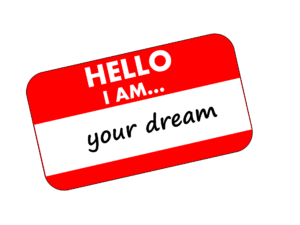
We’re coming up on one of my favorite times of the year. No, it’s not any of the traditional holidays you think of in December. I love the planning and preparing for a new year. It’s not the glitz and glamour and champagne of New Year’s Eve that I love. It’s the clean slate. A fresh start. A socially acceptable time to try something completely new and different than you’ve ever done before!
As a person who is frequently trying something new and different, I can safely say that people are much more open to that sort of thing for New Year’s. It’s a chance to dare and dream bigger and people are less likely to question your sanity. Of course, naysayers gonna nay (no idea how that phrase didn’t end up in Taylor Swift’s “Shake It Off”!), but for a short time around the first of the year, it’s a little less.
For all my joy surrounding this special time of year, I’ve never been big on resolutions. In fact, I don’t make them. Ever! It strikes me as odd that if a person discovers a big change they want to make in July, that they would then wait until January to follow through on it. I’m a big believer that when you find something you want to improve, you should take positive action immediately!
On the other side of the resolutions-spectrum, maybe there’s no major change you feel like you need to make right now. So why would you expend the energy trying to come up with some resolution to do (that you’re likely not fully committed to!) just to appease those who want to know what your resolutions are? There’s nothing worse than trying to accomplish something you think you “should” do instead of something that you truly desire for your authentic self. It’s a recipe for a failed resolution.
All that said, this is THE time of year for making resolutions and for some people, it’s the only time of year they are willing to consider doing something differently. So this seems like the perfect opportunity to spend some time talking about what positive action looks like… well… in action!
First, let’s talk positive. On any given day, there are lots of actions that you can take to achieve any number of results. Not all of those actions are positive.
Here are two definitions of positive that I love:
- Constructive, optimistic, or confident
- With no possibility of doubt; clear and definite
Here’s an example of how to work positive into your action. Last week, my car broke down unexpectedly as I was driving my two kids to an appointment. I’m grateful I was able to maneuver safely to the shoulder of the road, getting out of the way of the rush hour traffic. It was frustrating and inconvenient to be stuck. Both the tow truck and my improvised ride home (my wonderful spouse!) were more than 30 minutes away. It would have been easy to fall into a whole bunch of not-so-positive actions (complaining, getting out of the car to kick the tires like they do on tv, etc.). In the moment, I had a choice: I had to ask myself what positive action I could take instead.
I should point out that I am not mechanically inclined, so opening up the hood (however you do that!) and working on the car wasn’t a positive action available to me. Given the volume of traffic whizzing by us, walking elsewhere was also not viable.
I decided that the three of us would use this quiet time in the car to build the ultimate Christmas music playlist. We had a blast taking turns picking favorite holiday tunes and singing along as we added each one to the ultimate playlist. It was a fun way to spend close to an hour and we may have a new holiday tradition now!
Singing didn’t get us out of our trouble any faster (contrary to what musical theater would have you believe!), but it did make our time spent a lot more enjoyable. It’s only one example of the myriad ways you can incorporate positivity into whatever action you’re doing every day.
By contrast, the following evening after a series of stressful events, I made a less positive choice in a conversation with that same wonderful spouse who had willingly agreed to come pick me up less than 24 hours before. I had to reset (after I apologized!) and move forward. The point is, it’s a journey, and our default reaction may not always be the most positive action.
#PositiveAction Find one action today that could benefit from positivity and make the intentional choice to engage in positive action. If you aren’t sure where to start, ask yourself the question: How can I make this activity more fun? Or How can I use this to bring me one step closer to a dream I have?
Now that we’ve got positive covered, we’ll prepare for the new year by spending the next six weeks taking a deep dive into the elements of ACTION.



